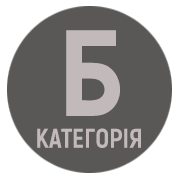Politeness as a communicative value: corpus research
DOI:
https://doi.org/10.32782/2617-3921.2025.27.249-261Keywords:
politeness, communicative value, corpus research, Sketch Engine, collocationAbstract
Language is the most important means of forming and sustaining human knowledge about the world. In the process of interacting with the objective world, individuals capture the results of its understanding with the help of words. Since language conveys a specific way of conceptualizing the world unique to it, its units reflect a particular system of views shared by its speakers.Moreover, language reflects the world and culture of the people who speak it, preserving this in linguistic units while simultaneously shaping its speakers. As individuals acquire a language, they begin to perceive the world through the perspective suggested by their native tongue and adopt the conceptualization of the world inherent in their culture. Language records, preserves, and transmits from generation to generation the system of values upon which a specific culture is based, serving as one of its most essential characteristics.The present article examines the lexeme “politeness” as a communicative value in modern English, employing a mixed-methods approach that integrates quantitative and qualitative research techniques. Quantitative methods include frequency analysis and n-gram modeling to identify common collocations of “politeness” within the enTenTen21 corpus. Word clouds visually represent the frequency and relationships of these collocations, emphasizing their significance in various contexts. Qualitative analysis explores the social, cultural, and linguistic dimensions of “politeness”, analyzing its functions in domains such as gender, power, social justice, digital communication, and child development.The findings demonstrate that “politeness” functions as both a linguistic characteristic and a social construct, rooted in cultural norms and values. The study reveals its role in regulating behaviour, maintaining social harmony, and reflecting cultural attitudes toward communication. Corpus contexts also include workplace communication, where “politeness” facilitates professionalism, and digital interactions, in which traditional etiquette often erodes. Additionally, the analysis points to the influence of gender aspects and power structures on the verbalization of politeness.A comprehensive examination of collocations with the lexeme “politeness” reveals how specific pairings reflect habitual language use and cultural priorities.The word cloud provides a dynamic way to visualize the semantic relationships of politeness with its contextual lexemes. At its core is politeness, surrounded by lexemes, which belong to the same semantic field or share similar contextual usage. The present corpus research highlights the connections of politeness with other communicative values such as gentleness, prudence, humility, etc.
References
Bober N., Liashko O., Kapranov Y., Cherkhava O., Meleshkevych L., Interpretation of keywords as indicators of intertextuality in English New Testament texts. Wisdom. Vol. 2(22), 2022. P. 193–207.
Brown P. Politeness and Impoliteness. Oxford Handbook of Pragmatics/ ed. Yan Huang. Oxford: Oxford University Press, 2017. P. 383–399.
Friginal E. The case of task-oriented, polite discourse in intercultural aviation and customer service interactions. Journal of Corpora and Discourse Studies, Vol. 7, 2024. P. 258–281.
Gumartifa A. Studies of Sociolinguistics: Theory of Politeness in English as Second Language. Journey, Vol. 5, No. 1, 2022. P. 91–100.
Haugh M. The discursive challenge to politeness theory: An interactional alternative. Journal of Politeness Research, No. 3, 2007. P. 295–317.
Islentyeva A., Pesendorfer L., Tolochin I.V. “Can I have a cup of tea please?” Politeness markers in the Spoken BNC2014. Journal of Politeness Research, No. 19, 2023. P. 297–322.
Kostelijk E. Values-based Communication: A New Impulse to Communication Effectiveness. Joy (Advances in Public Relations and Communication Management, Vol. 5) / Verčič, A.T., Tench, R. and Einwiller, S. (Ed.). Emerald Publishing Limited, Leeds, 2020. P. 21–35.
Lach Mirghani K. Thank you, sorry and please: English politeness markers in Polish. Crossroads. A Journal of English Studies, № 38, 2022. P. 94–116.
Leech J. The Pragmatics of Politeness. Oxford: Oxford University Press, 2014. 343 p.
Makhachashvili R., Semenist I. Linguistic philosophy of cyberspace. 25th World Multi-Conference on Systemics, Cybernetics and Informatics, WMSCI. Vol. 2, 2021. P. 24–29.
Oliver S.J. A corpus-based approach to (im)politeness metalanguage: A case study on Shakespeare’s plays. Journal of Pragmatics, Vol. 199, 2022. P. 6–20.
Pan Zh. A Corpus-Based Study on Politeness Used by L1 Thai EFL Learners. International Journal of Linguistics 2022, Vol. 14, No. 6. P. 28–47.
Sketch Engine. 2024. URL: https://app.sketchengine.eu/
Ruhi S. & Aksan Y. Exploring (Im)politeness in Specialized and General Corpora: Converging Methodologies and Analytic Procedures. Cambridge: Cambridge Scholars Publishing, 2015. 263 p.
Thomas J.E. Discovering English with Sketch Engine (DESkE), chapter 9 Word Sketches, 2015. P. 161–176.
Wierzbicka A. Cross-Cultural Pragmatics. The Semantics of Human Interaction (2nd ed.). Berlin: Mouton de Gruyter, 2003. 502 p.



